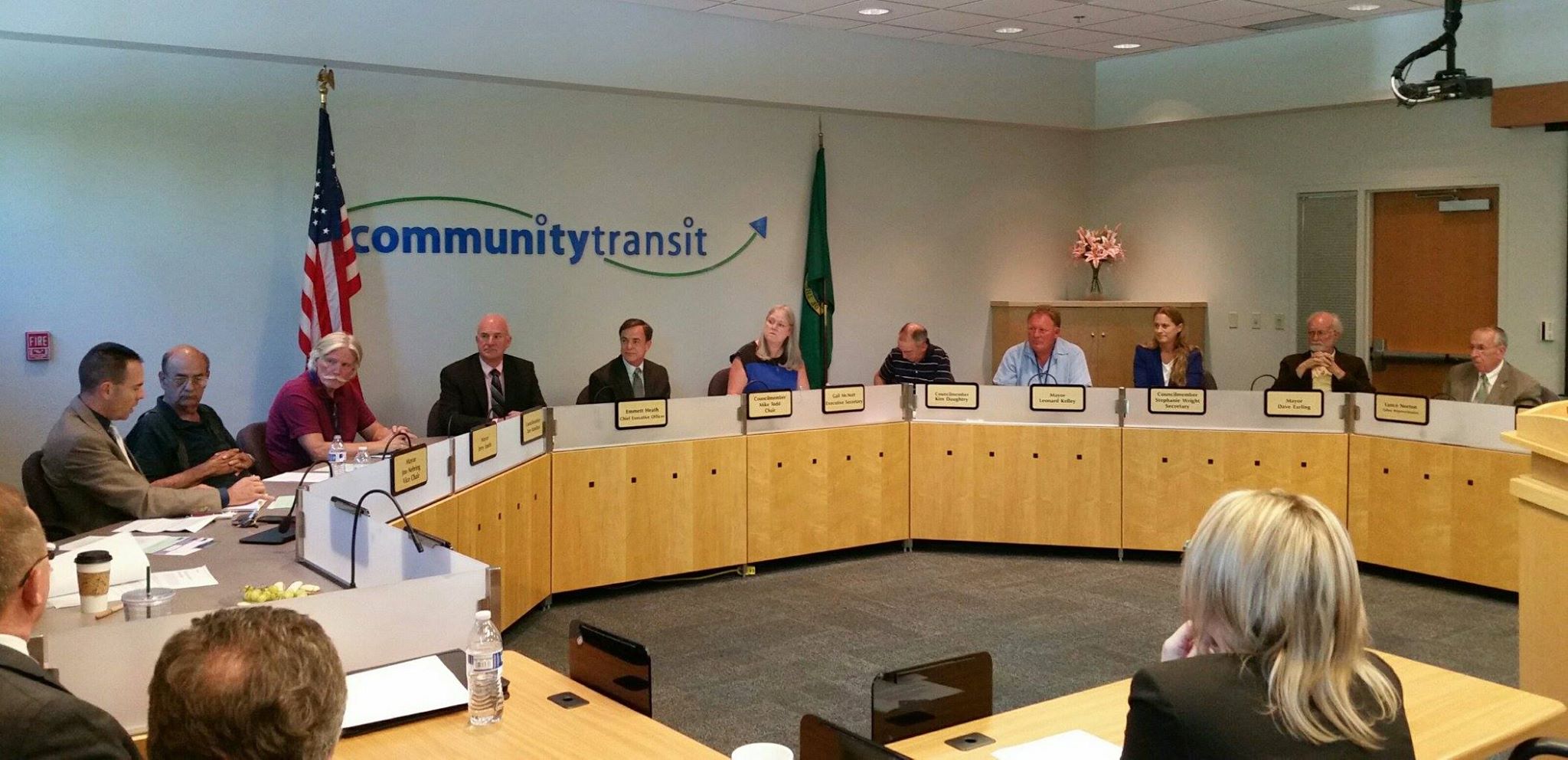Snohomish County has an opportunity to vastly improve bus service if voters pass a sales tax in November. A sales tax increase of 0.3% would deliver up to $25 million annually for new transit operations and infrastructure investments throughout Snohomish County and select inter-county routes. Community Transit gave a small preview of possible investments that might come from new revenue. The biggest of these would be a second Swift bus rapid transit line, a new SR-9 route linking outlying communities to the urban center of the county (I-5 and 128th St SW), and increased frequency and span of service on local routes.
This measure was only possible by the passage of the transportation package signed by Governor Jay Inslee last week. Community Transit had lobbied hard throughout this year’s legislative session to get new taxing authority. Local legislators, members of the Snohomish County community, and Community Transit staff visited the state capitol on numerous occasions to urge support for new taxing authority. In the wake of Inslee signing the bill, the Community Transit Board of Directors wasted no time; they went to work the day after to pass Resolution 08-15. If voters approve the proposal, Community Transit’s 0.9% sales tax will rise to 1.2%, a 25% increase. Despite the seemingly large tax increase, it’s important to put things into context.
In the recession, Community Transit was hit hard by the volatility in tax revenues while strong demand for transit service continued. The agency faced tough decisions about how future operations would continue. Multiple rounds of service reductions were enacted between 2009 and 2012, which resulted in the loss of 160,000 service hours (37% of the total service hours). Sunday and holiday service were eliminated, span of service trimmed, and routes deleted. Service cuts aside, Community Transit has largely lived within its means since 1990, the last time the agency asked voters to pay for service expansion*.
Ridership spiked 8% last year on Community Transit routes and 47,000 service hours have been deployed since 2012. Another 7,000 service hours are planned to be added annually between 2016 and 2019. But, even with these increases in service hours, Community Transit will remain 87,000 service hours short of its 2009 high.
What’s in the proposal
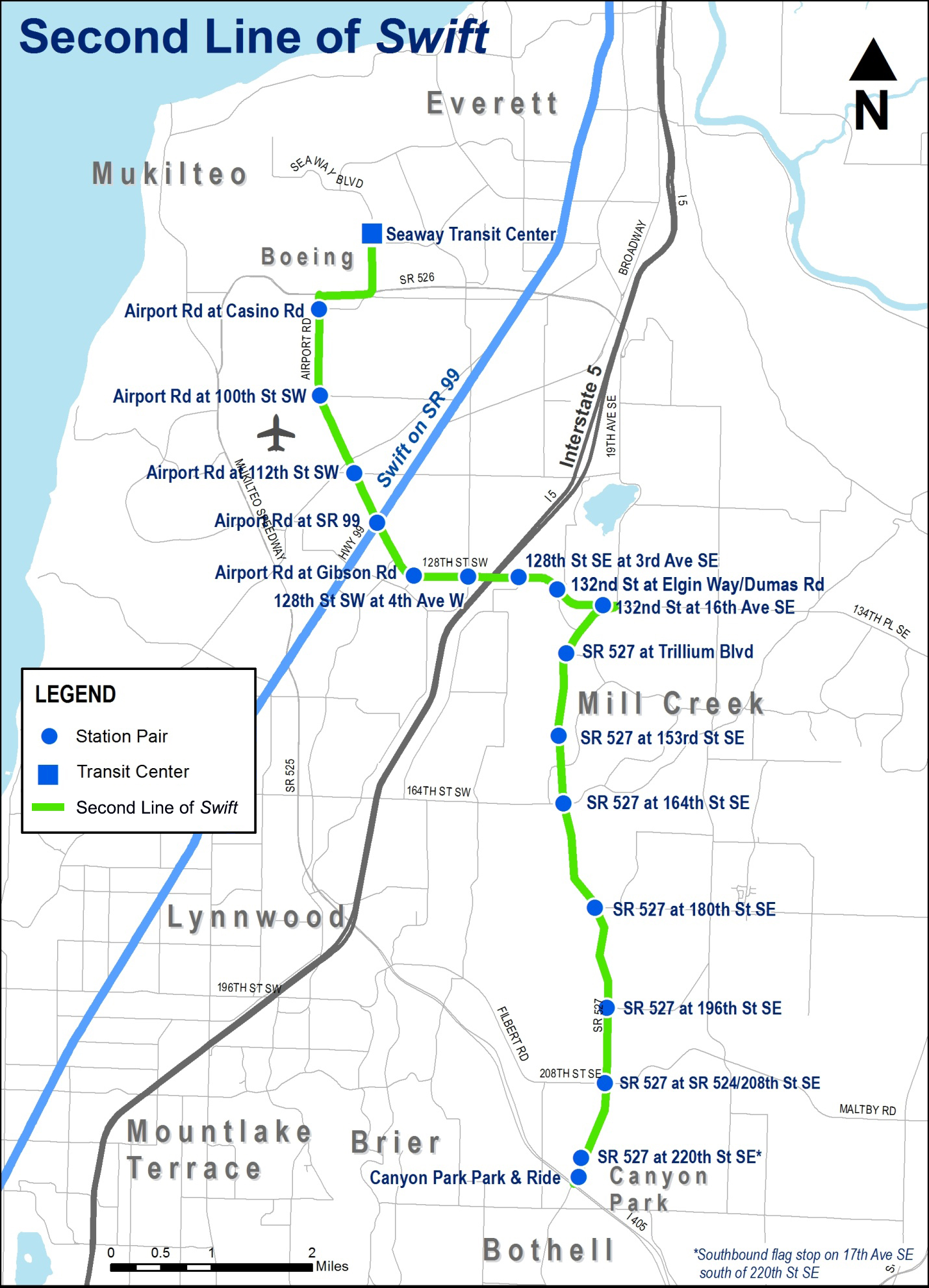
The centerpiece of the proposal is Swift II, a bus rapid transit (BRT) line that would link Paine Field and Bothell via Mill Creek. Community Transit projects that the 12.5-mile line would attract up to 3,300 daily riders on the first day of operations. The corridor itself would connect with key local routes like the 101, 105/106, 115/116, 201/202 and commuter routes as well as its sister service Swift I on SR-99. 14 station pairs would dot the alignment and be anchored by two transit hubs; one at Canyon Park Park & Ride and the other at Boeing’s future Seaway Transit Center at Paine Field. Community Transit could deploy the route as early as 2018 if state and federal funding flow to the agency to purchase buses and make the proper infrastructural investments. Community Transit is already actively working with local jurisdictions like Snohomish County and Mill Creek to implement some aspects of these investments.
Community Transit strongly supports the BRT service typology because it has been successful in capturing large numbers of riders at all portions of the week and day. In fact, Swift I is by far Community Transit’s most used route. According to ridership numbers, over 16% of Community Transit riders use Swift on weekdays and more than 30% on Saturdays. But if that isn’t impressive, consider that the 31 stops of Swift I account for nearly 20% of all ridership for the agency, despite having more than 1,500 stops.
With larger stop distances, faster travel over distances, clear branding and station amenities like real-time arrival notification, off-board payment, and high frequencies (as frequent as every 10 minutes on weekdays), it’s little surprise that Swift I has been a shining star in Community Transit’s route network. And, this is exactly what Community Transit hopes to replicate with Swift II. But the agency doesn’t want to stop just there with BRT, an additional four corridors could get future BRT treatments by 2030.
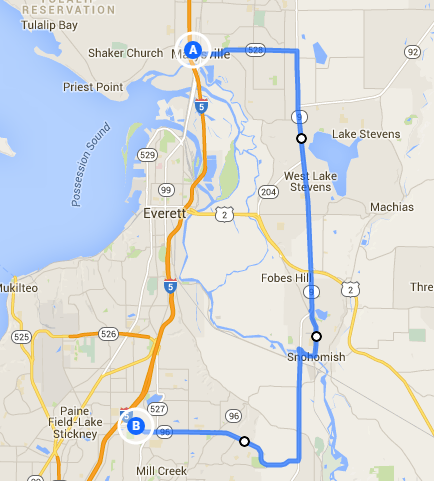
Community Transit also wants to enhance services in other ways, too. A top priority in the measure will be to deploy a new SR-9 routes. One possible route that the agency would pursue in the corridor includes an alignment running from Marysville to McCollum Park via Lake Stevens, Snohomish, and Silver Firs. McCollum Park is a large county park and park-and-ride facility just east of I-5. This routing would have the benefit of connecting with Swift II, local routes, and future light rail if the Sound Transit Board sends light rail to I-5 and 128th St SW (Mariner Park & Ride or McCollum Park Park & Ride).
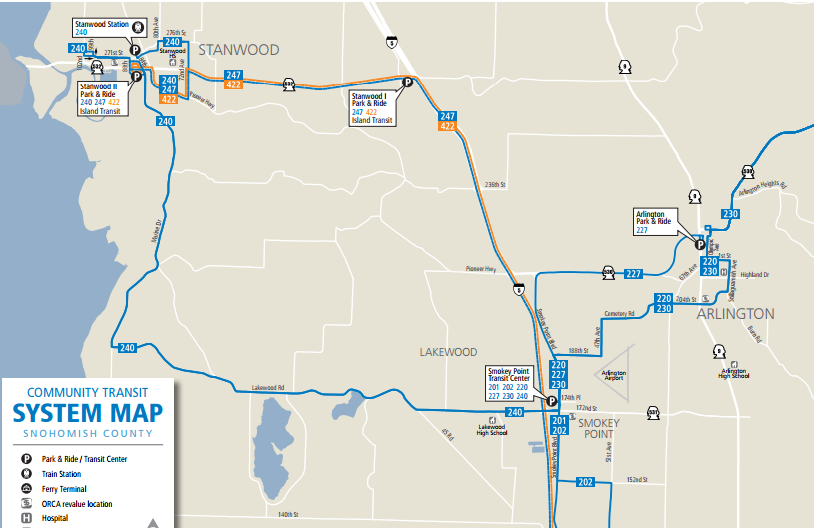
Additional local service would be deployed in the communities of Arlington, Monroe, and Stanwood in order to neighborhood access to centers of jobs and education. At present, these areas have relatively few bus routes serving them and the frequency is very low. For instance, Route 240 between Stanwood and Arlington’s Smoke Point Transit Center is a weekday only service running at most hourly during daytime hours. Meanwhile, Arlignton’s local routes like the 220 (nearly hourly on weekdays) and 230 (twice daily on weekdays) are incredibly low despite a sizable urban community.
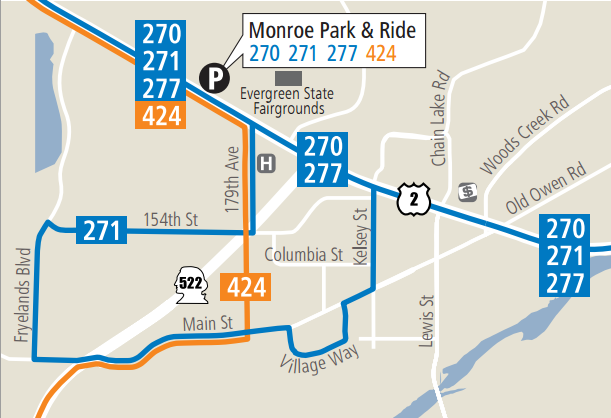
Even Commuter routes to Downtown Seattle and the University of Washington would also get a boost under the proposal. Community Transit will presumably up the number of specific trips for these routes where there is crowding and demand. However, the service hours will eventually be converted elsewhere in the network when the Lynnwood Link extension opens in 2023. The opening of the light rail alignment will also likely result in significant route network changes within southwest urban portion of Snohomish County.
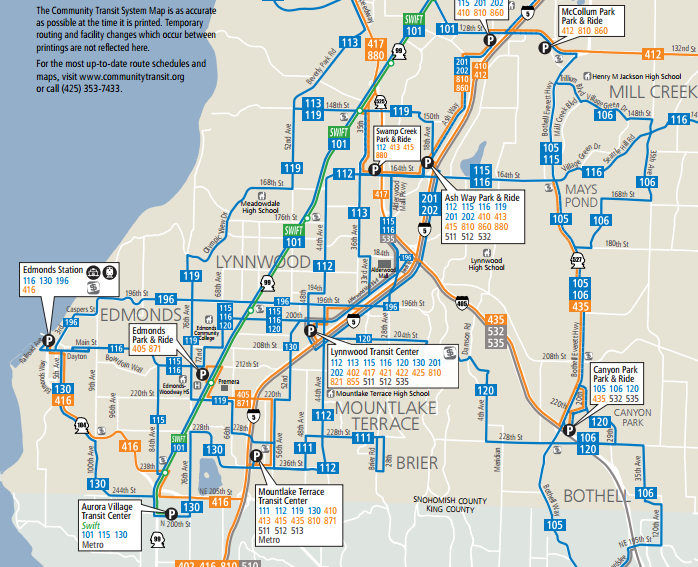
East-west connections are also planned for an upgrade. Community Transit wants to reorient how service operates, particularly in the Southwest Urban Growth Area of Snohomish County. Service in the area is generally north-south with a complicated series of routes that provide east-west connections. New and modified routes are possible solutions to the network issues.
Finally, the other proposed service improvements include: increased frequency on local service and expanded hours of operation for all days of the week, more vanpools, and expanded DART paratransit service. Community Transit CEO Emmett Heath says that if the measure is approved by voters, new service could arrive as early as March 2016 — the next soonest service change after the November election.
*The last tax increase in 2001 was merely an offset for the funding reductions resulting from the repeal of the motor vehicle excise tax (Tim Eyman’s I-695) approved by voters statewide.
Stephen is a professional urban planner in Puget Sound with a passion for sustainable, livable, and diverse cities. He is especially interested in how policies, regulations, and programs can promote positive outcomes for communities. With stints in great cities like Bellingham and Cork, Stephen currently lives in Seattle. He primarily covers land use and transportation issues and has been with The Urbanist since 2014.


